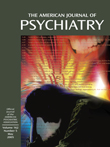Abstract
OBJECTIVE: This study tracked the individual criteria of four DSM-IV personality disorders—borderline, schizotypal, avoidant, and obsessive-compulsive personality disorders—and how they change over 2 years. METHOD: This clinical sample of patients with personality disorders was derived from the Collaborative Longitudinal Personality Disorders Study and included all participants with borderline, schizotypal, avoidant, or obsessive-compulsive personality disorder for whom complete 24-month blind follow-up assessments were obtained (N=474). The authors identified and rank-ordered criteria for each of the four personality disorders by their variation in prevalence and changeability (remission) over time. RESULTS: The most prevalent and least changeable criteria over 2 years were paranoid ideation and unusual experiences for schizotypal personality disorder, affective instability and anger for borderline personality disorder, feeling inadequate and feeling socially inept for avoidant personality disorder, and rigidity and problems delegating for obsessive-compulsive personality disorder. The least prevalent and most changeable criteria were odd behavior and constricted affect for schizotypal personality disorder, self-injury and behaviors defending against abandonment for borderline personality disorder, avoiding jobs that are interpersonal and avoiding potentially embarrassing situations for avoidant personality disorder, and miserly behaviors and strict moral behaviors for obsessive-compulsive personality disorder. CONCLUSIONS: These patterns highlight that within personality disorders the relatively fixed criteria are more trait-like and attitudinal, whereas the relatively intermittent criteria are more behavioral and reactive. These patterns suggest that personality disorders are hybrids of traits and symptomatic behaviors and that the interaction of these elements over time helps determine diagnostic stability. These patterns may also inform criterion selection for DSM-V.



